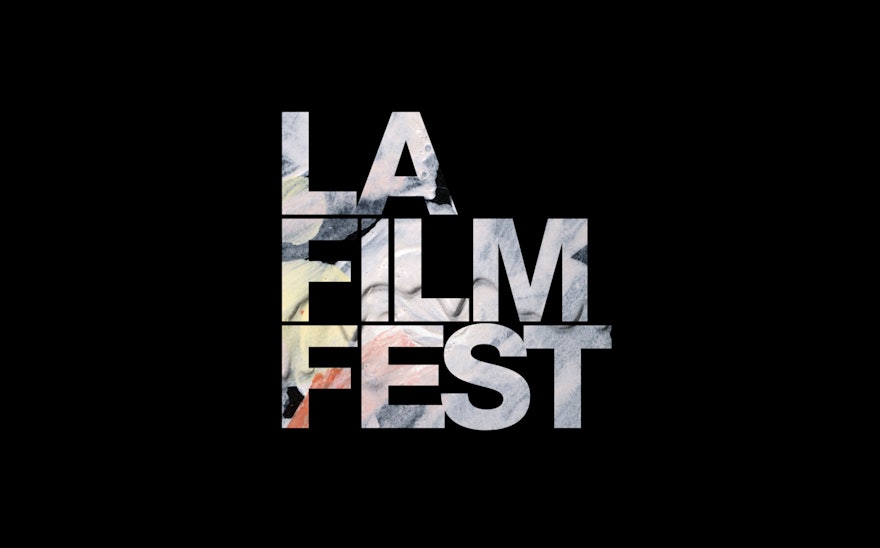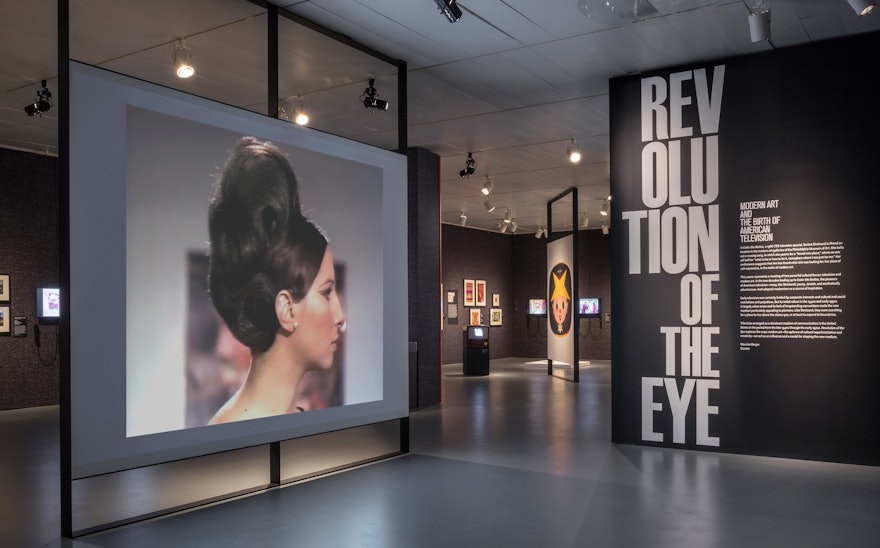Pentagram designed a bold identity, promotional campaign, and motion graphics for the 2015 LA Film Festival. Produced by Film Independent and now in its 21st year, the Festival showcases 74 feature films—including 39 world premieres—60 short films and over 50 new media works representing 35 countries. Simultaneously strong, colorful and evocative, the branding sets the tone for the extraordinary range of films presented at the Festival.
The designers collaborated closely on the Festival branding with Stephanie Allain, the director of the LA Film Festival, and Maggie Moe, director of marketing at Film Independent. Pentagram produced the official Festival poster and a trailer to be shown before screenings. The team also worked with Film Independent to produce advertisements and the program brochure cover, street banners and other on-site graphics, and the Festival app opening screen and website.
The LA Film Fest is one of the major programs of Film Independent, a non-profit arts organization that champions independent film and helps filmmakers make their movies and build an audience for their projects. The Festival typography pairs well with the graphics Pentagram designed for the 30th annual Film Independent Spirit Awards (usually called the "Spirit Awards"), which are also produced by Film Independent (Pentagram also designed the Film Independent identity).
Over the past two years, the Festival has promoted itself with a series of official posters created in collaboration with a mix of iconic and up-and-coming L.A.-based artists. The 2014 poster, for the Festival’s 20th edition, featured an image by Ed Ruscha that played off his famous 20th Century Fox painting. For this year’s Festival, the organizers commissioned a work by Noah Davis, an acclaimed artist with a growing profile. The painting pictures dots of color in a sea of black, evoking the lights of L.A. and the moon at night as seen from the hills around the city.
“Noah captures the glamor of L.A. at night and the endless promise of Hollywood dreams,” says Stephanie Allain. To integrate the Festival branding into the painting, the designers created a brushwork texture similar to Davis’s and placed into the letterforms of the wordmark. The effect helps make the typography tonally consistent with Davis’s painting and adds a splash of color to the moody L.A. noir. It allows the L.A. lights of the painting to reflect directly into the wordmark and identity.
The Festival trailer builds on the visual components of the poster, breaking them down to tell a story about the joy of filmmaking and the “magical substance” of creativity. The team wanted to keep the trailer abstract and simple—just iconic, evocative images. While the poster’s painting is not shown, the same color scheme and medium—that other magical substance, paint—is used to make a strong connection across the brand. In the trailer, traditional icons of film including a film slate, a boom mic, a camera and an actor appear dripping with paint, which splashes across the screen and ultimately reveals the logo.
Shown before every screening at the Festival, the trailer helps set the tone for the event and reinforces Film Independent as an organization that supports filmmakers and artists. The simplicity of the trailer functions as a kind of “palate cleanser” between films of all kinds, offering a creative “reset” for audiences who frequently watch multiple films in the course of a day or the week.
To film the trailer, the designers hired Ashton Worthington, a photographer who frequently works with liquid to create abstract, conceptual photos. Working with a full crew that included a stylist, director of photography and lighting assistants, the designers spent 12 fun hours splattering paint in a Brooklyn studio. The objects were first spray-painted white and then doused with white paint to get them dripping. To get a variety of drips and drops, paint was thrown in the air, filled into a balloon that was exploded, and poured over an actor’s head. The textured color was added in post-production, and was animated further to have motion within the drips.
The rich, colorful visuals are complemented by a bright musical score that was created by the pop composer Stephen Bray, who is known for his collaborations with Madonna on many of her biggest hits (“Into the Groove,” “Express Yourself”) and is a Tony Award nominee for his work on the Broadway version of "The Color Purple."

